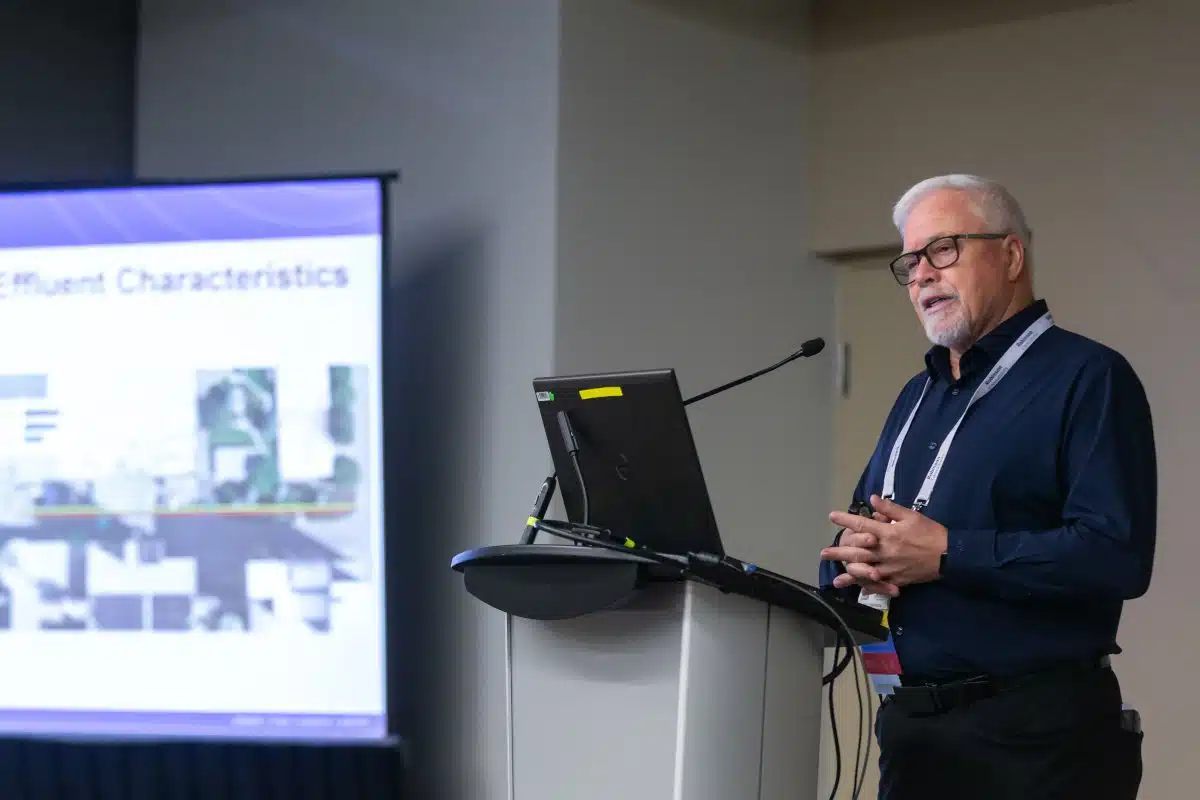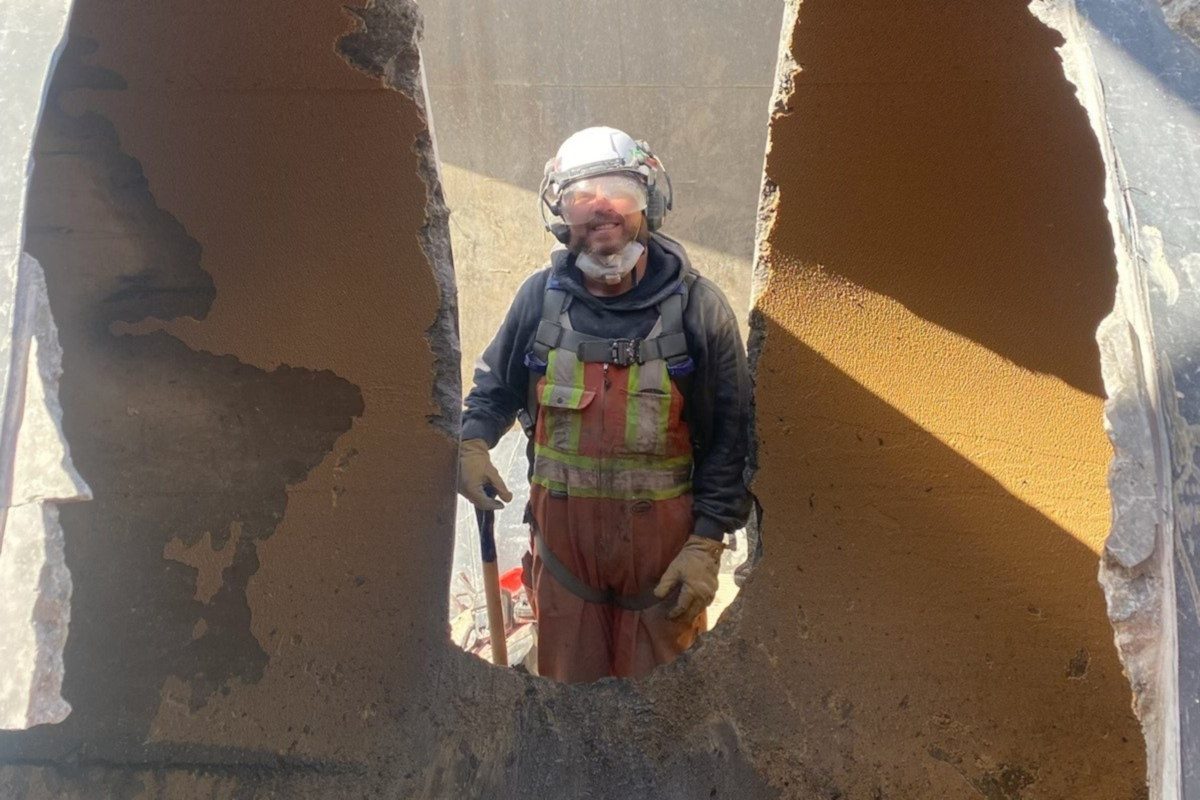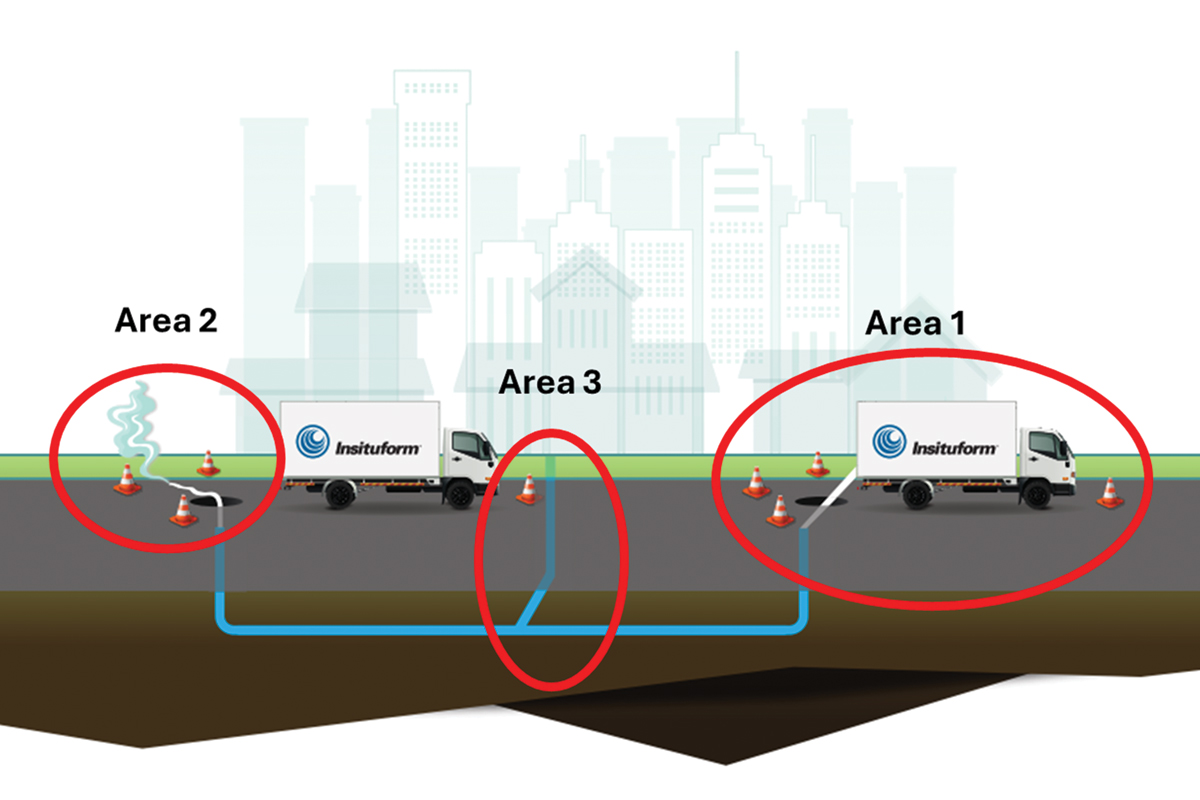
Trenchless Technology Canada Roundtable: The State of the Canadian Trenchless Market

Dibco-CRS (a joint venture consisting of CRS Tunnelling and Dibco Underground) were the contractors and Hatch was the engineer on the Twinning of Etobicoke Creek Trunk Sanitary Sewer project.
As the federal government looks to pump more money into infrastructure improvements across the country, trenchless technologies are poised to play a pivotal role. Unfortunately, some methods are more utilized and recognized than others. In an effort to gauge where the different provinces stand in the use and acceptance of trenchless methods, Trenchless Technology Canada reached out to several leaders in the field across the country.
The idea behind this inaugural discussion — titled “Trenchless Across Canada” — was to explore how trenchless is accepted and used across the different regions in Canada. We invited representatives from across Canada to discuss the state of the market in their area.
Taking part in our inaugural Trenchless Technology Canada roundtable are:
Reg Belyea, P.Eng.,
Independent trenchless construction specialist – Alberta
Marc Gelinas, P.Eng.,
Principal project engineer, Hatch – Ontario
Kim K. Lewis,
Mike McCarron,
Owner, Maritime Directional Ltd. – Nova Scotia
David O’Sullivan,
Owner, PW Trenchless – British Columbia
Walter Trisi,
General manager and vice president, CRS Tunnelling – Ontario
1) In the early days of trenchless technology, the focus was about education and acceptance. How do you view the market today? Is trenchless a mature market? What areas still need development? What areas are in growth mode?
TRISI: The focus is and should still be on education. Trenchless techniques are accepted in the marketplace today, but educating the engineers, designers and owners is still a priority, as these are the players who need to incorporate trenchless techniques into their designs and/or projects. The trenchless market in Canada is still growing. We see more and more projects out for tender that incorporate horizontal directional drilling (HDD) and microtunnelling. There has definitely been a growth in the microtunnelling sector in the past five years.

One key area of development that I see is in the standard of engineering design. Even now, I still see trenchless “designs” being tendered that place all responsibility on the contractor. While contractors should be given limited leeway to adjust tendered designs to suit their specific means and methods, I view it as the responsibility of the design engineer to make sure that tendered designs detail a constructible bid-basis.
BELYEA: In Canada, in my view, trenchless is still mainly in the development and acceptance phase, and is a number of years away from being considered mature. Many of the projects today are still being led by designs favouring open-cut solutions, primarily because the consulting industry still leans toward what it knows more about. However, on a positive note, the consulting industry does still evaluate contractor alternative trenchless proposals and will award alternative trenchless, when it is evaluated to have the lowest total installed cost. The main areas needing continued development is owner/consultant education and hands-on knowledge with the various trenchless technologies and their technical capabilities. This development will translate into more trenchless professionals and better designs. In the future, we see tremendous growth in the microtunnelling and tunnelling scopes of works.
McCARRON: The trenchless market is definitely growing. We experience many forms of organic growth through past relationships with customers but the industry is far from robust. Every day we experience more and more acceptance and understanding from the HDD prospective but much more awareness and education from the design end will certainly increase growth. Provincially, the bulk of our work is generated through municipal infrastructure development, so with the federal infrastructure initiative we are expecting growth to continue and realize opportunities to incorporate additional trenchless services.
O’SULLIVAN: In western Canada, there is very little education, the University of Alberta does have trenchless in the curriculum but it is alone. We, as an industry, have to re-educate every few years. I, through NASTT-BC and PW Trenchless, do a one-hour 101 trenchless program on a monthly basis for consultants and cities. The market is still in its infancy. The concept of proactive asset management is accepted by all the cities but far from being fully funded.
As engineers, we are not good at marketing our business, not like the health system. A failed pipe does not have the same effect as “my grandfather/child not getting an MRI.” When we have a pipe failure or a Walkerto, Ontario incident that gains the interest, but they are few and far between so far. As we asses in greater depth, the assets we have underground, the more we will become proactive and repair/replace on a proactive program.
LEWIS: We certainly need to educate with regards to the advantages of trenchless, as well as the new and innovative solutions that are available to Canadians. Our market is nowhere near being mature and in fact, we are just getting started in most locations. Primarily, our governments at all levels need to know the huge savings that are available as a result of trenchless adoption. Tax dollars go twice as far using trenchless, and the resulting work lasts as long as the original installation. Canada and Canadians need — and deserve — trenchless technology!
RELATED: Family, R&D at Centre of LiquiForce’s Continued Success
2) What is the acceptance and awareness of trenchless in your area? Do you feel like it is well-known or progressive? Or, is the use of trenchless lagging behind other areas?
O’SULLIVAN: Trenchless is about 10 percent of the overall market but that ranges from 0 to 50 percent depending, on the city. There are many misconceptions about trenchless about costs, ability, knowledge, etc. We, as industry players, have to remember that most municipal people are not risk-takers by nature and are not as knowledgeable as us about trenchless. We have to keep educating through various ways, lunches, roadshows, trying to be guest speakers at colleges.
McCARRON: Acceptance is certainly growing. I think a big part of that can be attributed to the quality of work being completed by the provincial trenchless contractors. You can expect to see continued use in design when previous projects are completed successfully and remain on budget.
LEWIS: Many cities are trenchless friendly and have established policies that require management to “prove the need to dig” before shovels are deployed. These locations are saving large sums of money, and are moving in the direction of becoming sustainable. Truly, it takes a long time to change the way it has always been done, and, therefore, many municipalities still deal with unnecessary high costs and traffic backups due to open-cut construction.
GELINAS: In the Greater Toronto Area (GTA), my impression is that most owners and regulators are aware and accepting of trenchless technologies. In many cases, the owners and regulators are taking things a step further and requiring the use of trenchless methods on their projects. Where I see an issue is that sometimes there is an unrealistic expectation of what trenchless can deliver. As an example, despite the application of best practices in engineering and construction, we cannot completely eliminate the risk of hydrofracture from an HDD installation. As such, while we need to capitalize on this positive and progressive attitude toward trenchless, we need to ensure that expectations are adequate and that, as an industry, we can deliver on those expectations.
RELATED: Microtunnelling Provides Solution for Project under Toronto’s Pearson International Airport
3) What are the market drivers for trenchless? What are the inhibitors?
BELYEA: Today, in Canada, there are two key drivers; the age of infrastructure and cost certainty. Federal, provincial and municipal governments are recognizing that they must get ahead of the tidal wave of expenditures awaiting them. Trenchless gives authorities the ability to do more with less…stretch their budget dollars. But, they must ensure that they are obtaining the best total installed cost (TIC) value for each taxpayer’s or shareholder’s dollar spent. Cost certainty is more likely to be achieved when projects are evaluated on a TIC basis, and not on a cost per meter.
GELINAS: In terms of inhibitors, the primary ones remain cost and schedule. While most owners are willing to pay a premium for trenchless, if an installation can be completed faster or cheaper by traditional methods then it’s only natural to question the benefits of going trenchless. 
Owners may be willing to accept a certain amount of traffic disruption or public impact if the schedule or cost-savings are significant enough. Where the benefit outweighs the impact varies from case to case. Another inhibitor is access to trenchless equipment and materials. While this has improved significantly in recent years, my impression is that we are still dealing with a somewhat limited menu of options in Canada and don’t have the same access that exists in the United States or Europe.
McCARRON: Regionally, I feel our biggest inhibitor is our geological conditions and the lack of knowledge of subsurface conditions. When dealing with rock, it drives cost up for both the contractor and the customers.
RELATED: NASTT-BC Is an Integral Part of Canada’s Trenchless Growth
4) Which disciplines are driving the market?
LEWIS: From our perspective, we see mainline liners, lateral rehabilitation and manhole repairs all increasing rapidly. Mainline work with CIPP liners has been around for some time, but it is really exploding now. In certain large sewers, we see GRP panel jobs coming out more often as well. The lateral liners and manhole rehab are newer entries to trenchless, and ,as systems have now been patented, tested and proven, we see large multi-year contracts in these areas, as well. A full length in-ground CIPP liner was recently excavated after 40 years and it showed less than 1 percent degradation in that time period. Quite a testimony for the industry.

BELYEA: For rehab, CIPP is the proven, tested trenchless method in Canada from coast to coast for many years. The water rehab market is growing and drawing global trenchless players with their products into Canada. Also, in the pipeline installation market, advancements in HDD crossing methodology is now gaining industry acceptance and design inroads. Another being used in the pipeline market is Direct Pipe.
5) What is the percentage of work being done trenchless vs. open cut? How does this compare to years past?
TRISI: I’m not sure what the percentage is, but there is definitely an increased use of microtunnelling today than compared to five years ago. Some of the most recent projects in southern Ontario are comprised of 50 percent microtunnelling and 50 percent open cut on the same job, which is allowing the microtunnel subcontractor to bid the project as a general contractor because the value of the job is skewed more to the trenchless underground works.
GELINAS: It’s hard to put a number to this, as it depends if we are considering the length of installations or the construction value of the work being completed. Speaking solely for trenchless new construction, I would estimate that in terms of length, on the order of 10 to 20 percent of new construction is completed by trenchless methods. However, in terms of the construction value of the work, I would estimate that trenchless has a much higher percentage, perhaps as high as 50 percent. In both cases, this represents a significant growth from even as little as five years ago.
RELATED: Power in the Province
6) How is innovation shaping the market? What barriers exist to innovation? What do you see as the next big thing in trenchless?
O’SULLIVAN: We are continuously bringing new products to the market. Last year, we introduced Channelline to the British Columbia market, and two cities have used it and are happy with the product. We are on our third project so far. However, one area I feel that we, as an industry, need to be diligent on is the standard of construction.

McCARRON: Fundamentally, with the state of our current underground infrastructure and existing landscapes, buildings, roads, etc., the industry will need to find ways to replace or renew with less environmental/social impacts on the surroundings. Pipe bursting is a great example of an innovative method in this area but the lack of volume or requests makes procuring equipment and completing projects difficult and expensive. The next big thing in Nova Scotia is CIPP. It will be instrumental on the renewal of countless failing water, storm and sanitary mains.
LEWIS: As companies continue to innovate and mature, more and more benefits become available for the municipalities. With advanced life cycle information at their fingertips, cities can see a bigger picture and are able to plan in a way not seen in the past. We now experience multi-year and multi-faceted programs emerging from the cities that understand trenchless and know which are contractors that can deliver them. The cities know that they need to innovate in the way they procure their work, so that they find and secure quality companies that deliver on time and on budget. Several cities in Canada are looking at this through new methods and are flourishing because of it. It takes fortitude to break the norm.
7) How are cost and environmental considerations affecting the market?

Trenchless construction methods are gaining favor across Canada as municipalities and contractors look for more cost-effective ways to work around congested urban centers.
BELYEA: Today, as good corporate citizens, we must include additional dollars to ensure that we have addressed the regulatory requirements, associated with our projects. Total costs are higher for open-cut than trenchless construction solutions. Trenchless’ advantage is that it has proven to be more environmentally friendly, and thus costs to meet regulatory expectations is typically lower.
LEWIS: Trenchless flourishes as environmental concerns continuously escalate. From no idling traffic — to no cutting of trees — to no I&I in the system, trenchless becomes a more viable option as it is understood. Along with this, the new methods of preparation and installation allow for less steps and complexity of the rehabilitation program. All of the above leads to short and long term cost savings for the taxpayers. A real key to the industry is in securing and Engineer or Engineering Firm who truly understands the industry. Many don’t. We are fortunate in Canada to have a number of world class Engineering experts to advise and guide us.
8) What are your closing thoughts on the state of trenchless in the Canadian marketplace?
TRISI: Trenchless technologies have their place. They will not eliminate the need for open cut. As the industry grows and trenchless technologies are utilized more and more, the costs will go down and use of these techniques will increase. The market is definitely growing and the outlook for trenchless in Ontario and Canada looks very promising.
BELYEA: The Canadian trenchless industry is healthy and getting stronger, but there is an impending shortage of skilled contractors. The shortage of contractors in Canada will result from the United States’ unprecedented growth in infrastructure construction, driven by new federal policies that will come out of the new President-elect’s mandate. Many of the global trenchless and tunnelling contractors will be drawn towards the United States infrastructure programs, and this will put pressure on Canada’s infrastructure programs because of the competition between cross-border projects for good experienced trenchless contractors.
McCARRON: There is nothing short of challenges within the trenchless industry in Nova Scotia. From design to completion and everything in between, we are a few working extremely hard to think outside the box. It’s an exciting industry and I’m proud to be a part of it.
O’SULLIVAN: Canada needs more education and more courses by NASTT on training inspectors on the types of trenchless methods and what to look for. I do not think there is one answer to the problem of growing the industry. We need a multi-pronged attack to move trenchless along.
Mike Kezdi is associate editor of Trenchless Technology Canada.




